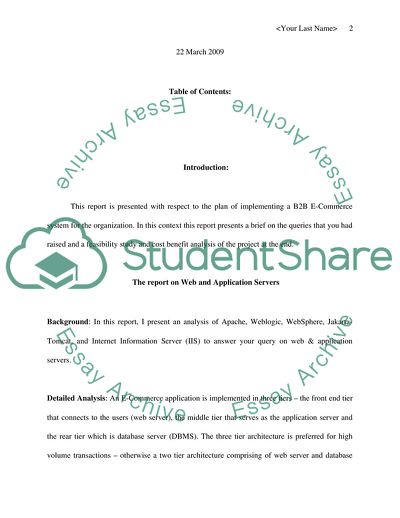Cite this document
(Strategy of B2B E-Commerce System Case Study Example | Topics and Well Written Essays - 2000 words, n.d.)
Strategy of B2B E-Commerce System Case Study Example | Topics and Well Written Essays - 2000 words. Retrieved from https://studentshare.org/information-technology/1721844-managing-communication-and-networks-scenario
Strategy of B2B E-Commerce System Case Study Example | Topics and Well Written Essays - 2000 words. Retrieved from https://studentshare.org/information-technology/1721844-managing-communication-and-networks-scenario
(Strategy of B2B E-Commerce System Case Study Example | Topics and Well Written Essays - 2000 Words)
Strategy of B2B E-Commerce System Case Study Example | Topics and Well Written Essays - 2000 Words. https://studentshare.org/information-technology/1721844-managing-communication-and-networks-scenario.
Strategy of B2B E-Commerce System Case Study Example | Topics and Well Written Essays - 2000 Words. https://studentshare.org/information-technology/1721844-managing-communication-and-networks-scenario.
“Strategy of B2B E-Commerce System Case Study Example | Topics and Well Written Essays - 2000 Words”. https://studentshare.org/information-technology/1721844-managing-communication-and-networks-scenario.


